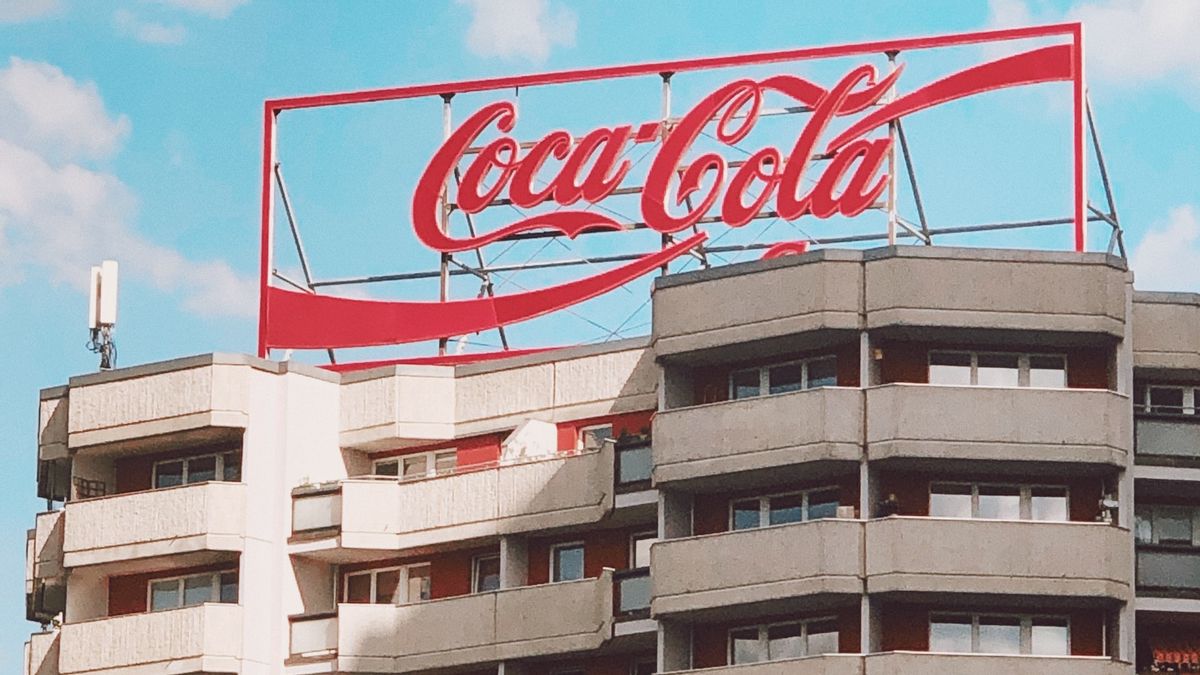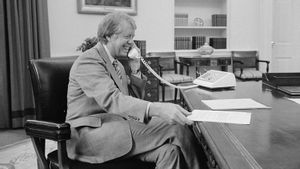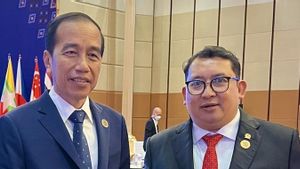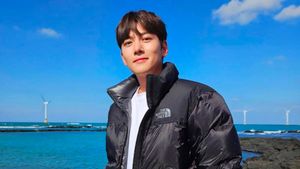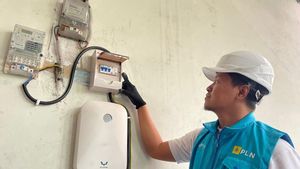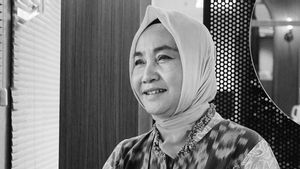JAKARTA - Coca-Cola is one of the most valuable trademarks in the world. In Indonesia too. Since its inception, Coca-Cola has become famous. Coca Cola's popularity increased when the New Order-style economic openness was implemented.
Coca Cola has an important secret, namely stretching promotions that always invite interest. More than 200 countries have sold the drink commonly called Coke. Coke was later dubbed the drink of the international spirit.
Perhaps there would be no Coke if there was no interest from a pharmacist from Georgia, United States (US) John Pemberton in 1886. At that time John Pemberton was obsessed with creating painkillers.
However, the medicine he wanted to create was not in the form of ordinary medicine which tended to have an unpleasant taste. From there came the idea to develop a drug in the form of a drink that we now know as Coca-Cola.

“John Pemberton was obsessed: he wanted to create the ultimate drug and the perfect drink combined into one,” says Mark Pendergrast in For God, Country, and Coca-Cola (2013).
"With that, he'll make enough money to fund his dream lab, with plenty left over for his family. He can even donate to a worthy charitable organization."

Although not immediately successful, John Pemberton always said the drink can treat many ailments, especially headaches and depression due to a concoction that uses coca leaves (the main ingredient of cocaine) and caffeine-rich kola nut extract.
His assistant then saw the basic ingredients of Coca and Cola as a potential trademark. Frank Robinson thinks two "Cs" will stand out for advertising. He also created a name with flowing italics. The world's most famous logo was born.
Coca Cola business development
Sales of Coca Cola were initially limited to John Berton's practice. A glass of Coca Cola sells for 5 cents. The success of sales led John Pemberton to advertise the signature drink in The Atlanta Journal on May 29, 1886.
In the ad he emphasizes the message: Coca-Cola. Delicious! Refreshing! Exhilarating! Refreshing! a new fizzy drink containing the amazing plant properties of cocaine and the famous cola seed.
Launching Britannica, the success of Coca Cola drinks was then glimpsed by another pharmacist, Asa Griggs Candler (1851-1929). Candler bought John Pamberton's Coca Cola patent in 1887. It was in Candler's hands that Coca Cola became worldwide.
In 1891, he took full ownership of Coca Cola. Candler founded the Coca Cola Company the following year. Candler also directly registered the Coca-Cola trademark patent in 1893.

Candler's quick movement and sharp business instincts brought Coca Cola to fame. Candler is later also known as the person behind the birth of the concept of discount aka discount.
We've covered it in a MEMORY article entitled Asa Candler, Coca Cola Owner Creates the Blessing We Call Discount. Sales were initially only about nine thousand gallons in 1890 increased to 370,877 gallons in 1900.
Sales growth was also supported by the establishment of many Coca Cola Company factories in major US cities, such as Dallas, Los Angeles, and Philadelphia. Sales of Coca Cola expanded further, when Candler signed his first agreement with an independent bottling company.
The company was granted a license to manufacture, bottle and distribute Coca Cola. Such licensing agreements (bottling factories) then form the basis of the distribution system that characterizes US soft drinks.
The fruit, Coca-Cola began to be marketed outside the US in collaboration with local bottling factories, including to the Dutch East Indies (Indonesia).
Coca Cola enters Indonesia
Coca Cola first entered Indonesia in 1927. Coca Cola products were imported by a Dutch engineer named De Koenig in the form of whole bottles.
After that, in 1932 Coca-Cola began to be mass produced. The mass production was carried out by De Water Nederlands Indische Mineral Water Fabrieck (Dutch Indies Mineral Water Factory) in Batavia.
"The Coca Cola product was introduced to Indonesia in 1927, with local production starting in Jakarta in 1932. In the first year of production around 10,000 were sold with the help of only three trucks and 25 employees," wrote Domunikus Juju and Feri Sulianta in the book Branding Promotion with Social Networks (2010).
However, ten years later or right after the Dutch East Indies fell to the Japanese, Coca-Cola production stopped completely. The stretch of Coca-Cola production began to see a bright spot after Indonesia's independence in 1945.
The factory was again operated under the banner of The Indonesia Bottles Ltd Nv (IBL), a national company founded by TH Ticoalu, Tatang Nana, and Harry Handojo. The factory is capable of producing 1,000 to 1,500 cracks of Coca Cola every day.

The company also employs 25 people who are assisted by three to seven trucks for distribution. Although production is running smoothly, Coca Cola has not been able to spread its wings to various regions in the archipelago.
The reason is because President Soekarno did not really like things that smelled of capitalism. However, Coca-Cola grew rapidly when the New Order (Orba) under the leadership of Suharto came to power. With the concept of economic openness, Coca Cola and other foreign products began to flood the archipelago.
"In the 1970s, along with the flow of foreign investment and domestic capital, the advertising business activity as the main force of modern industrial and trade marketing communication began to rise," wrote Bedjo Riyanto in the book Strategy for Packing Enjoyments (2019).
"Various global-scale multinational companies are starting to establish their markets in Indonesia such as Coca-Cola, General Motors, Toyota, Mitsubishi, FujiFilm, Unilever, Procter & Gamble, and others. By bringing in advertising agencies that are trusted as planners and implementers of product marketing promotion campaign program.”
[BERNAS: Ronaldo vs Coca Cola: Negative Campaign Two Big Brands, Why did CR7 win?]
Coca Cola then dominates the soft drink market in Indonesia. This condition is in line with the emergence of Coca Cola bottling factories in ten areas. The factories were successively built in Jakarta (1971), Medan (1973), Surabaya (1976), Semarang (1976), Ujung Pandang (1981), Bandung (1983), Padang (1985), Bali (1985), Manado (1985), and Banjarmasin (1981).
As expected, the habit of drinking Coca-Cola in the western style has become a new trend among the people of Indonesia. Those who initially often consumed lemonade moved to buy Coca Cola. Because of that local lemonade entrepreneurs began to lose money.
Moreover, the small beverage industry does not get serious attention from the government. Sastrawan, Goenawan Mohamad, who lived during the New Order era agreed with this condition. "That old white colonel (Kentucky Fried Chicken) hasn't finally killed Mbok Berek."
"The American fried chicken that spread, thank God, didn't become a single fried chicken. Coca Cola did press small local breweries when it arrived here; but then came Teh Botol Sosro. Then, the others. Cendol, wedang ronde, and sekoteng even remain irreplaceable – even though there is no special speech in RT-RT to defend them,” concluded Goenawan Mohamad in an article in Tempo magazine entitled Uniform (1985).
*Read other information about POPULAR CULTURE or read other interesting articles from Detha Arya Tifada.
Other MEMORIESThe English, Chinese, Japanese, Arabic, and French versions are automatically generated by the AI. So there may still be inaccuracies in translating, please always see Indonesian as our main language. (system supported by DigitalSiber.id)
